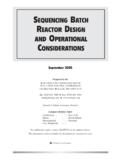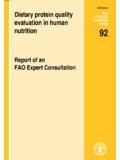Transcription of Cultures and Selves: A Cycle of Mutual ª The Author(s ...
1 Perspectives on Psychological Science 5(4) 420 430. Cultures and selves : A Cycle of Mutual The Author(s ) 2010. Reprints and permission: Constitution DOI: Hazel Rose Markus1 and Shinobu Kitayama2. 1. Department of Psychology, Stanford University, CA and 2 Department of Psychology, University of Michigan, Ann Arbor Abstract The study of culture and self casts psychology's understanding of the self, identity, or agency as central to the analysis and interpretation of behavior and demonstrates that Cultures and selves define and build upon each other in an ongoing Cycle of Mutual constitution. In a selective review of theoretical and empirical work, we define self and what the self does, define culture and how it constitutes the self (and vice versa), define independence and interdependence and determine how they shape psychological functioning, and examine the continuing challenges and controversies in the study of culture and self. We propose that a self is the me'' at the center of experience a continually developing sense of awareness and agency that guides actions and takes shape as the individual, both brain and body, becomes attuned to various environments.
2 selves incorporate the patterning of their various environments and thus confer particular and culture -specific form and function to the psychological processes they organize ( , attention, perception, cognition, emotion, motivation, interpersonal relationship, group). In turn, as selves engage with their sociocultural contexts, they reinforce and sometimes change the ideas, practices, and institutions of these environments. Keywords culture , self, agency, independence, interdependence Within psychology, the empirical study of the self as a cul- in the , but by judgments made about both the self and tural product and process is now almost three decades old about one's mother in China (Zhu, Zhang, Fan, & Han, 2007). ( , A. Fiske, Kitayama, Markus, & Nisbett, 1998; Markus Moreover, in the last decade, the cultural comparisons stud- & Kitayama, 1991; Shweder & Bourne, 1984; Triandis, ied are no longer just between people in North American and 1989).
3 Hundreds of surveys, laboratory experiments, and field East Asian contexts; they now include comparisons across a studies have bolstered earlier theories and ethnographic obser- variety of other significant social distinctions. Researchers also vations, drawing attention to powerful variation in self and know, for example, that people in West African settings claim personhood. Researchers now have a good grasp of why the more enemies and fewer friends than those in North American nail that sticks out is likely to be hammered down in Japan settings (Adams, 2005); that Western Europeans are less likely whereas the squeaky wheel attracts grease and attention in the than North Americans to associate happiness with personal United States (for reviews, see Heine, 2008; Kitayama & achievement (Kitayama, Park, Sevincer, Karasawa, & Uskul, Cohen, 2007). They know, for example, that North American 2009); that Latino dyads talk, smile, and laugh more than do students can be expected to speak up in class more than their Black and White dyads (Holloway, Waldrip, & Ickes, 2009).
4 Korean American counterparts (Kim, 2002); that parental that Protestants are more likely than Jews to believe that people expectations can have opposite motivational effects in Asian have control over their thoughts ( Cohen & Rozin, 2001);. American and European American families (Iyengar & Lep- that people from the South respond with more anger to per, 1999); that Japanese Olympic gold medalists, in compar- insults than do Northerners (Nisbett, 1993); and that working ison with American medalists, likely discuss their failures and faults more than their successes and virtues (Markus, Uchida, Omoregie, Townsend, & Kitayama, 2006); that helping others is a moral obligation that holds whether or not one likes the Corresponding Author: person in Indian contexts, but not in American contexts Hazel Rose Markus, Department of Psychology, Jordan Hall, Building 420, (Miller & Bersoff, 1998); and that the medial prefrontal cor- Stanford University, Stanford, CA 94305.
5 Tex of the brain is activated by judgments made about the self E-mail: 420. culture and Self 421. class Americans react less strongly than middle-class Ameri- current and future behavior (Banaji & Prentice, 1994; Carver cans to having their choices denied (Snibbe & Markus, 2005). & Scheier, 1998; Fiske & Taylor, 1994). selves are always These striking differences in behavior, as well as hundreds situated and, as a consequence, they always reflect their con- of others like them, are important in their own right. They texts in significant ways. markedly expand the range of the normal, or of the good'' Just as one cannot be an unsituated or general self, one also or right way to be,'' by revealing patterns of thinking, feeling, cannot be a self by one's self. selves develop through symbo- and acting that have not been part of mainstream psychology. lically mediated, collaborative interaction with others and Understanding these differences has significant practical appli- the social environment (Kitayama, Duffy, & Uchida, 2007.)
6 Cations for intergroup relations, education, health, well-being, Markus & Kitayama, 2003). The question of cultural influence business, and peaceful coexistence in an increasingly diverse or constitution of the self then is not one of if,'' instead, it is of and interconnected world. The study of culture and self, how- how'' and when.'' Cultural variation across selves arises ever, has two other highly significant consequences for the from differences in the images, ideas (including beliefs, values, field of psychology, and they are the focus here. and stereotypes), norms, tasks, practices, and social interac- First, the study of culture and self has renewed and extended tions that characterize various social environments and reflects psychology's understanding of the self, identity, or agency and differences in how to attune to these environments. casts it as central to the analysis and interpretation of behavior. Theorists use a family of overlapping terms for the nexus of Experience is socioculturally patterned, and the self reflects the the biological, psychological, and sociocultural: self, self- individual's engagement with the world that is the source of concept, self-schema, self-construal, selfway, self-narrative, this patterning.
7 The array of contrasting behavioral differences ego, psyche, mind, identity, personal identity, social identity, described in the opening paragraph can all be illuminated with and agency. Agency is the most general or global term and a focus on what it means to be a self or agent in a particular refers to acting in the world. Self is usually interchangeable sociocultural context. with agency but is sometimes used to refer more specifically Second, the study of culture and self has led to the realiza- to how the person thinks or believes him or herself to be. Iden- tion that people and their sociocultural worlds are not separate tity is typically used when the emphasis is on how others, be from one another. Instead they require each other and complete they individuals or groups, influence the person. All of the one another. In an ongoing Cycle of Mutual constitution, people terms are similar in purpose. They attempt to index the are socioculturally shaped shapers of their environments; they dynamic and recursive process of organizing and integrating make each other up and are most productively analyzed through which the individual, the biological entity, becomes together (Shweder, 2003).
8 The comparative method of socio- a meaningful entity that is, a person. cultural psychology reveals that although feeling, thinking, and acting can take particular, culture -specific forms, the capacity to continually shape and to be shaped by the context is a pow- What Does a Self Do? erful human universal. selves are implicitly and explicitly at work in all aspects of In the sections below, we examine these two consequences behavior: attention, perception, cognition, emotion, motivation, of the study of culture and self in detail. In the course of a selec- relationships, and group processes. More specifically, one's tive review of some of the major empirical and theoretical con- ongoing sense of self functions as a foundational schema that tributions, we will define self and what the self does, define recruits and organizes more specific self-regulatory schemas, culture and how it constitutes the self (and vice versa), define including cognitive, emotional, motivational, somatic, and beha- independence and interdependence and determine how they vioral schemas.
9 Some of the compelling evidence for selves at shape psychological functioning, and examine the continuing work can be seen in studies in contexts with American par- challenges and controversies in the study of culture and self. ticipants. People hear their own name across a noisy crowded room (Wood & Cowan, 1995), remember their own contributions to a project better than they remember the contributions of What Is a Self? their coworkers (Ross & Sicoly, 1979), and are motivated by A self is the me'' at the center of experience a continually self-interest and self-concern across a wide variety of domains developing sense of awareness and agency that guides action (Greenwald, 1980). In broad strokes, people in North American and takes shape as the individual, both brain and body, contexts are smarter, kinder, healthier, and happier when their becomes attuned to the various environments it inhabits. selves selves are affirmed or when situations are self or identity congru- are thus psychological realities that are both biologically ent than when selves are threatened or when situations are identity (LeDoux, 1996; Northoff et al.)
10 , 2006) and socioculturally incongruent ( , Oyserman, 2008; Steele, Spencer, & Aronson, (Markus & Kitayama, 1991) rooted. selves develop as individ- 2002; Taylor, Lerner, Sherman, Sage, & McDowell, 2003). uals attune themselves to contexts that provide different solu- Researchers have now moved beyond the traditional confine tions to the universal questions of Who or what am I?'', of research within North America and have observed contexts What should I be doing?'', and How do I relate to others?'' like those in East Asia and South Asia. These contexts are quite (Kitayama & Uchida, 2005; Markus & Hamedani, 2007). They differently arranged than North American ones and are ani- are simultaneously schemas of past behavior and patterns for mated by different ontological understandings of what a person 421. 422 Markus and Kitayama The Mutual Constitution of Cultures and selves SOCIETAL FACTORS &. PERVASIVE IDEAS. Ecological, economic, and historical factors INSTITUTIONS &.













